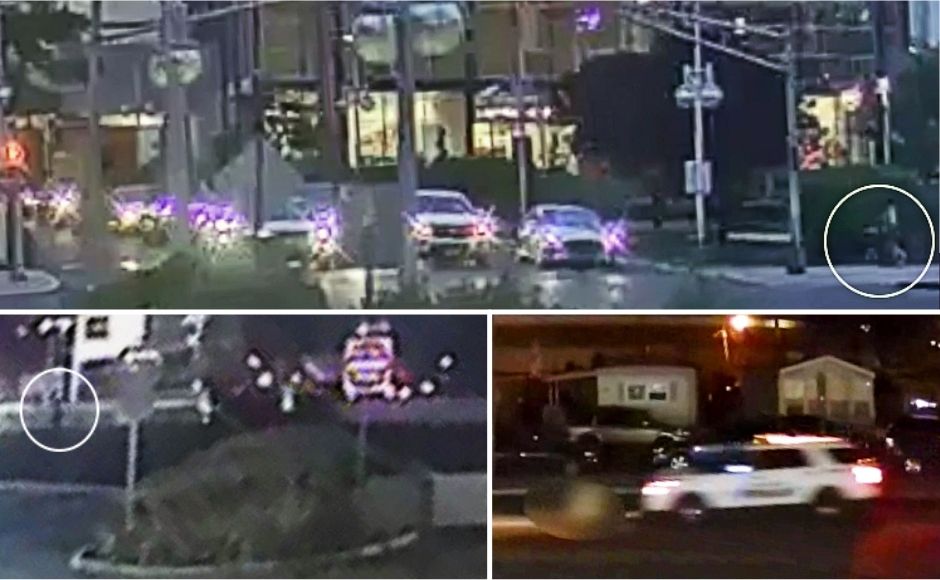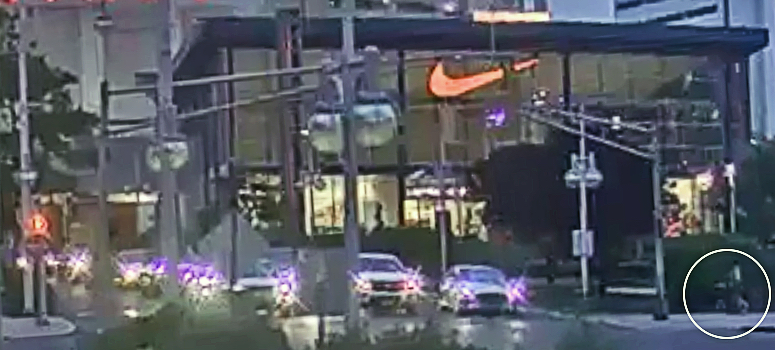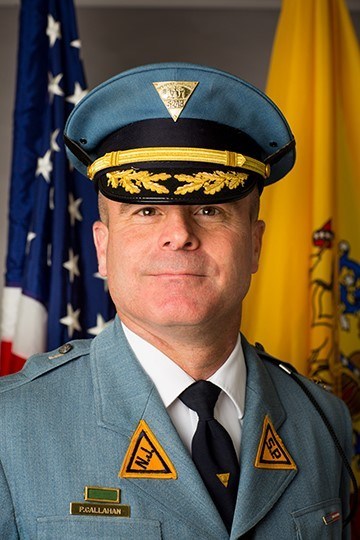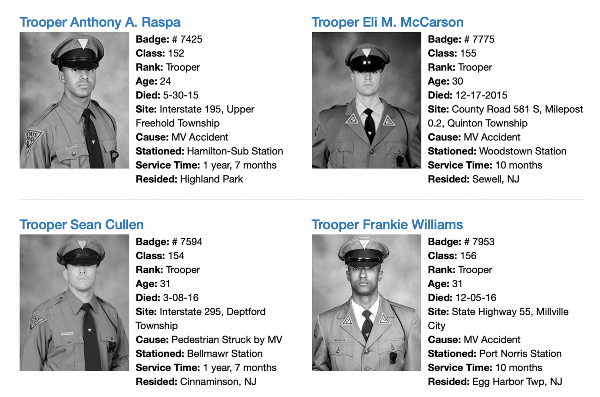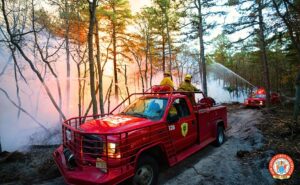This summer, two pedestrians and a bicyclist died in fatal collisions with police vehicles in three New Jersey cities. Traffic-related deaths across the state were up in 2020, and 2021 could match it.
By Matt Skoufalos | October 12, 2021
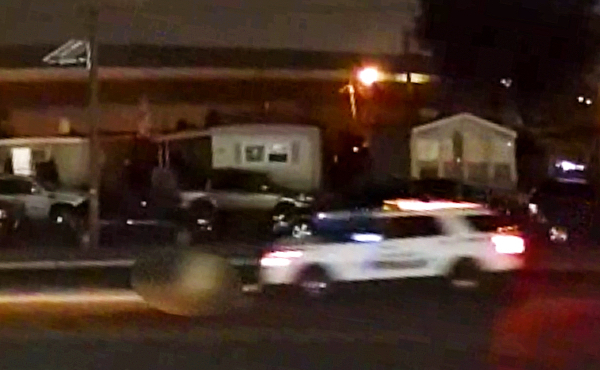
Zandra Baez of Camden City was hit by Camden County Metro Police Officer Kevin Randolph Gilbert, Jr. in June 2021. Credit: NJ Pen.
Just before 11 p.m. on June 9, 66-year-old Zandra Baez of Camden City was crossing Mount Ephraim Avenue at Woodlynne Avenue when Camden County Metro Police Officer Kevin Randolph Gilbert, Jr. hit her with a police SUV.
According to the New Jersey Office of the Attorney General (OAG), Gilbert, Jr. was in uniform, on duty, and was not responding to any call for service at the time.
Baez was dragged some distance after the collision, and in bodycam footage, Gilbert, Jr. requested an “ambulance immediately” before eventually declaring, “[S]he’s dead. 100 percent.”
Eight days later, 63-year-old Everett Stern of Atlantic City was traveling across the intersection of Arctic Avenue at Arkansas Avenue when he rode into a marked patrol car being driven by Atlantic City Police Officer Ahmed Waqar.
According to the OAG, Waqar was responding to a routine call for service, “with no lights or siren activated” at the time of the collision. The officer called for back-up, administered first aid, and emergency services personnel responded right away.
Nevertheless, Stern died a week later, June 25, at AtlantiCare Regional Medical Center, from injuries sustained in his collision with the vehicle.
Then, around 3:30 a.m. on August 1, 55-year-old Julius Filep of East Brunswick, was traveling across Route 18 northbound on foot when he was hit by East Brunswick Police Officer Mitchell Ngai.
Ngai, who was on-duty, in uniform, and driving a marked patrol vehicle, was responding to the scene of a car crash on the other side of the highway.
Filep was transported by ambulance to Robert Wood Johnson University Hospital, where he was pronounced dead less than 45 minutes later.

Julius Filep was hit and killed by East Brunswick Police Officer Mitchell Ngai on August 1, 2021. Credit: NJ Pen.
Within three months, two pedestrians and one pedalcyclist all had perished on New Jersey roadways after encounters with New Jersey police officers.
All three incidents, while distinct from one another, and still under investigation by the attorney general under the state Independent Prosecutor Directive, have the potential to result in grand jury trials for the officers involved.
At the outset of the year, state law enforcement officials knew that the novel coronavirus (COVID-19) pandemic had resulted in an uptick in fatal motor vehicle collisions, despite fewer cars being on the road for large stretches of time during 2020.
In February 2021, then-New Jersey Attorney General Gurbir S. Grewal even issued a press release urging all drivers to be more cautious this year:
“…what we’re learning from the 2020 data is extremely concerning: even with less cars on the road due to the COVID-19 pandemic, irresponsible drivers caused more fatal accidents last year,” Grewal wrote. “That’s why in 2021 we’re focused on changing driver behavior to make the roads safer for everyone.”
That same release cited the National Highway Traffic Safety Administration (NHTSA) conclusion “that driver behavior is to blame” for a 30-percent nationwide increase in fatal crashes and collisions, as “driving patterns and behaviors changed significantly” during the early months of the pandemic, with drivers engaging “in more risky behavior.”
In 2020, New Jersey sustained 29 more highway-crash-related deaths (587) than it had in 2019 (558), and, through early October 2021, has already achieved 85 percent of last year’s total (497 fatalities) entering the final quarter of the year, according to data from the New Jersey State Police.
In the past four years, 1,000 pedestrians, 79 pedalcyclists, 1,484 drivers, and 409 passengers have died in highway collisions in New Jersey. It remains to be seen whether the state will rebound from those elevated figures in 2022 overall or in encounters with law enforcement.
OAG spokesperson Peter Aseltine said in an e-mail that his office monitors police-involved traffic deaths “to see if there are trends that should be addressed through education or updated guidance,” noting also that the New Jersey State Police “emphasizes officer traffic safety and addresses any issues” as part of its own reviews.
Families who lose loved ones due to a fatal encounter with police are supported by the State Office of Victim-Witness Advocacy (SOVWA) “to help them cope with the aftermath of these tragic events,” Aseltine wrote. Among those supports, SOVWA provides victims’ families with updates about the investigations, including privately reviewing audio and video footage from the police encounter with the families involved before releasing the information publicly.
For officers who are involved in traumatic incidents, such as a police-involved civilian death, departments also offer various supports, including access to the statewide resiliency program for law enforcement officers.
“We are committed to providing whatever resources we can to families in connection with these traumatic events,” Aseltine wrote.
“We strongly believe that the best way to honor the deceased individual—and to provide closure to the families—is to conduct a comprehensive investigation and assist the grand jury in determining whether any law enforcement officers should be charged in the incident,” he wrote.
‘One fatality is one too many’
In a review of traffic safety data from January 1, 2017 through August 18, 2021, New Jersey State Police Colonel Pat Callahan said that including the three this summer, two pedalcyclists, and seven pedestrians have died in encounters with law enforcement in the past four years.
Although those incidents account for just nine of the 2,972 traffic-related deaths in that time period, “I do believe that one fatality is one too many,” the colonel said.
As the commanding officer in charge of the police unit tasked with patrolling the highways of New Jersey, Callahan said traffic safety remains a priority for troopers, with a risk management office built around it.
From his perspective, being a safe driver, bicyclist, and pedestrian “really is a shared responsibility” among all users of the road, including first responders.
“I do think that law enforcement in New Jersey and around the country really needs to be mindful of the difference that speed makes, and the limits of your own cars,” Callahan said.
“Nobody wants to see a trooper go by them at 100 mph,” he said. “It drives me batty.”
Any state trooper or civilian working in the agency who is found to have been involved in two preventable crashes in three years is required to undergo remedial training, the colonel said. These can include driving simulators, an emergency vehicle operations course (EVOC), and an administrative review of response procedures, including when speeding is permitted and when it is not.
“There’s no need to do 100 mph to a two-car accident if you’ve already been told nobody’s been injured,” he said. “We routinely put up EVOC training to keep those people proficient in not driving beyond your car’s ability or your personal ability.”
Neither are police immune to the dangers of unsafe driving. From May 2015 to December 2016, four state troopers—Anthony Raspa, Eli McCarson, Sean Cullen, and Frankie Williams—all perished in high-speed traffic incidents, at which point Callahan tried personally to spark some changes within his ranks.
“I went to every single in-service, talked to 3,000 troopers, and walked them through the day of talking to those troopers’ families, wives, unborn children,” he said.
“I told them, ‘You need to slow down.’”
There’s work that goes into supporting officers who are involved in processing the trauma of a police-involved fatality, Callahan said, including professional counseling and peer assistance.
Those resources are important regardless of the circumstances of the loss.
“Whether it’s firing your weapon or hitting that person with a motor vehicle, that gets carried forever,” Callahan said. “We need to take care of that victim’s family and the officers that were involved in that tragedy.”
“The message to pedestrians and bicyclists is, ‘This is not for you'”
In addition to considering speed, pandemic-related stress, and the mismatch of tonnage among pedestrians and pedalcyclists versus motor vehicles, another key factor underscoring traffic deaths is poor roadway design, said Kevin Murphy, Manager of the Office of Safe Streets at the Delaware Valley Regional Planning Commission.
“We’re not doing a good job of accommodating users other than those who are driving,” Murphy said.
“As an institution, police don’t support high-speed chases, but it’s easy for people to speed up,” he said.
“A prescription for safety everywhere is to move towards complete streets.”
In each of the three incidents this summer, Murphy outlined a number of concerns with the design of the roadways in which the deaths occurred—namely, rate of speed, traffic volume, and a lack of accommodations for non-drivers.
All three roadways—Mount Ephraim Avenue in Camden City, Arctic and Arkansas Avenues in Atlantic City, and Route 18 in East Brunswick—are multiple-lane, arterial streets along which there are high volumes of vehicles, which also travel at a higher rate of speed than they do in many residential neighborhoods.
“Those roadways tend to have fewer crossings for pedestrians, and typically no accommodations for bicyclists at all,” Murphy said. “It makes it easy to get a lot out of the land uses on the sides, but the message to pedestrians and bicyclists is, ‘This is not for you. You’re not entitled to this.’”
Mount Ephraim Avenue in Camden City, where Baez was killed, carries regional traffic in the direction of the Ferry Avenue PATCO station. The intersection of Arctic and Arkansas Avenues in Atlantic City, where Stern collided with a police vehicle, offers no bicyclist accommodation, and limited pedestrian accommodations.
Although Filep was crossing Route 18, a state highway, on foot, where no intersection exists, he was likely looking to save the long walk to the closest pedestrian overpasses, which are either a half-mile or a mile-and-a-half in either direction from where he was hit.
“Nobody should be walking out there; nobody should be biking out there,” Murphy said, “but if that’s your only option, what are you going to do?”
Jaywalking might be a traffic offense, he said, but “you shouldn’t have to pay with your life.”
In December 2018, DVRPC published “Crashes and Communities of Concern,” a study that analyzed “regional inequities in crash incidence” throughout the nine-county Greater Philadelphia region.
Its chief finding is the correlation of higher-than-average vehicle crash rates in communities with higher-than-average rates of low-income, disabled, and racial and ethnic minority populations. In such places, more people are likely to walk than to drive, and they live along arterial roadways, where speeds are higher and fatal crashes are more commonplace.
“Pedestrian safety investments focused on arterials that pass through these communities of concern are the most important tool for addressing the elevated crash rates,” the report concluded.
Although he believes that New Jersey is working hard to advance complete streets policies, which work to ensure that roadways are available to be used effectively by people in cars, on bikes, or on foot, Murphy noted that “We’re also trying to turn a ship.
“Policy’s a first step and New Jersey’s a leader nationwide, but it takes a while to move the needle, especially on a major highway like Route 18,” Murphy said.
“You’re looking at systemic problems, but that’s not an excuse not to have laws, and not to create a better environment for everybody,” he said.
Although DVRPC hasn’t examined the incidence of law-enforcement-involved collisions, Murphy said first responders are just as susceptible to dying in fatal crashes as are any other driver, passenger, pedestrian, or pedalcyclist.
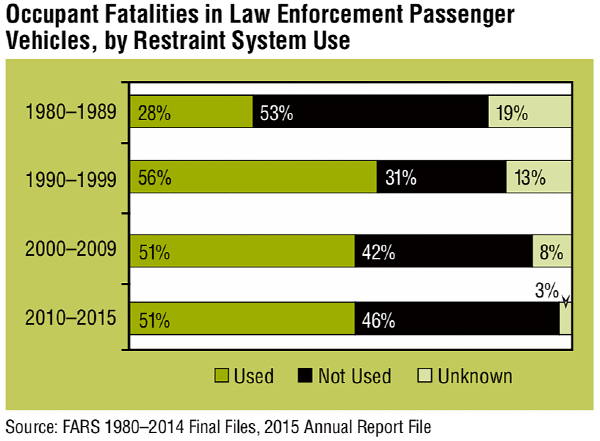
Occupant Fatalities in Law Enforcement Vehicles Involved in Motor Vehicle Traffic Crashes. Credit: NHTSA.
In its mid-year preliminary officer fatality report for 2021, the National Law Enforcement Memorial and Museum noted a “dramatic increase in traffic-related fatalities” among police.
Traffic-related officer deaths (38) were up 58 percent from those (24) reported during the same period of 2020.
That’s more than firearms-related officer deaths (28) and is second only to COVID-19-related fatalities.
Moreover, there’s historic evidence for first responders dying in vehicle crashes in which they weren’t wearing seatbelts. According to the 2018 NHTSA study, “Occupant Fatalities in Law Enforcement Vehicles Involved in Motor Vehicle Traffic Crashes,” 53 percent of police-vehicle occupants killed in crashes in the 1980s “did not use restraints.”
Those numbers improved slightly in the 1990s, but declined again thereafter; by the last decade, 46 percent of officers involved in fatal crashes were not wearing a seatbelt. In addition to subverting traffic safety messages built around seatbelt compliance, those data also underscore the dangers of unrestrained occupants being ejected from a vehicle in a crash.
“Every time I see a police officer driving faster than you would expect or hope, I worry that something unexpected could happen, and I wonder at what cost,” Murphy said. “Even the safest drivers aren’t immune to getting into a crash.”
Aside from policy improvements and better roadway design, the only way things will change is if drivers work to adapt their own behavior behind the wheel. Murphy urged motorists to try to reframe their own experiences. He encouraged slowing down and giving other roadway users the benefit of the doubt.
“We automatically accuse someone who cuts us short as being persona non grata, and we don’t necessarily know that they had any ill intent,” he said. “If you speed up to get through a yellow light, you’re not a bad person, but it is a dangerous move. And everybody does it.
“Make safety your priority, not speed,” Murphy said. “That’s the path forward towards zero [roadway deaths].”

